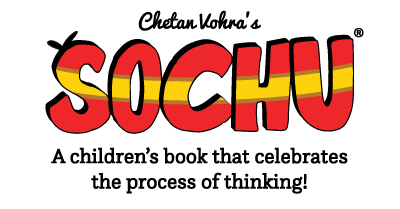We often treat anger as something loud, scary, or wrong. But in Sochu: The Angry Mountain, we learn that anger can also be quiet, slow, and invisible—until it erupts. Rehman doesn’t shout, throw things, or complain. But inside, he’s building a volcano of emotion, and no one notices… not even himself.
The story begins with a small “oops” that no one takes seriously. But as more things pile up—ignored hurt, crossed boundaries, broken objects—Rehman’s silence becomes heavy. When the class visits a strange mountain that looks like it’s fuming, the metaphor becomes clear: this isn’t just about rocks and lava. It’s about feelings that go unnoticed until it’s too late.
Through Sochu and his friends, children learn that emotions, like mountains, hold clues. If we slow down, listen, and care, we can understand what’s going on inside—before the eruption.
Here are 11 breadcrumbs that explore anger, boundaries, and the power of being heard:
1. When “Oops” Isn’t Enough
“Henry’s Big Angry Feelings—Anger Management For Kids Read Aloud” shows how small incidents can trigger hidden frustration in children.
2. Silent Reactions Build Up
“When I Am Angry—by Michael Gordon” highlights how unspoken anger still impacts us deeply—even when we don’t say a word.
3. A Soccer Game and a Boiling Point
“Anger Management for Kids! – Definition & 4 Positive Strategies” uses relatable scenarios of children and uncontrolled anger.
4. Suppressed Anger
“I Choose to Calm My Anger” tells a story of a child who learns to hold in frustration—perfect for exploring internalized responses.
5. The Angry Mountain Appears
“Anger Mountain” is a metaphorical animation depicting anger as a looming mountain—just like your described scene.
6. Reading Faces, Reading Feelings
“Anger Iceberg: What’s Beneath the Surface?” dives into hidden emotions under anger—like disappointment, sadness, and more.
7. Looking Beneath the Surface
This same “Anger Iceberg” video emphasizes the importance of understanding hidden feelings before judging—tying in metaphors like “haircut without permission.”
8. Noticing Without Judgment
“How I Feel When I Hear ‘No!’” gently shows how acknowledging emotions (without chastisement) supports empathy in children.
9. Understanding Needs
“I Am Stronger than Anger” explores that anger often masks deeper needs—like love, attention, or rest.
10. Collective Reflection
This is reinforced through “Anger Iceberg” and “Anger Management for Kids,” both of which illustrate how shared understanding helps process group emotions.
11. Giving Space to Emotions
“I Choose to Calm My Anger” (again) models expressing anger in safe ways while affirming that feeling angry is okay.
12. Creative Family Activities
🎨 Draw Your Angry Mountain
What would your mountain look like when it’s mad? Or scared? Or sad?
📖 Feeling Journal
Write one line a day without judgment: “Today I felt ___ when ___.”
🗣️ Name It to Tame It
When someone feels upset, pause and name the emotion out loud.
⛅ Mood Weather Chart
Each morning, pick a weather symbol that matches your mood—then talk about why.
🧘 Volcano Breathing
Breathe in like filling a volcano… Then slowly breathe out like releasing steam.
🌿 Plant a Feeling Together
Care for a plant as a family. Talk about how emotions need tending to.
